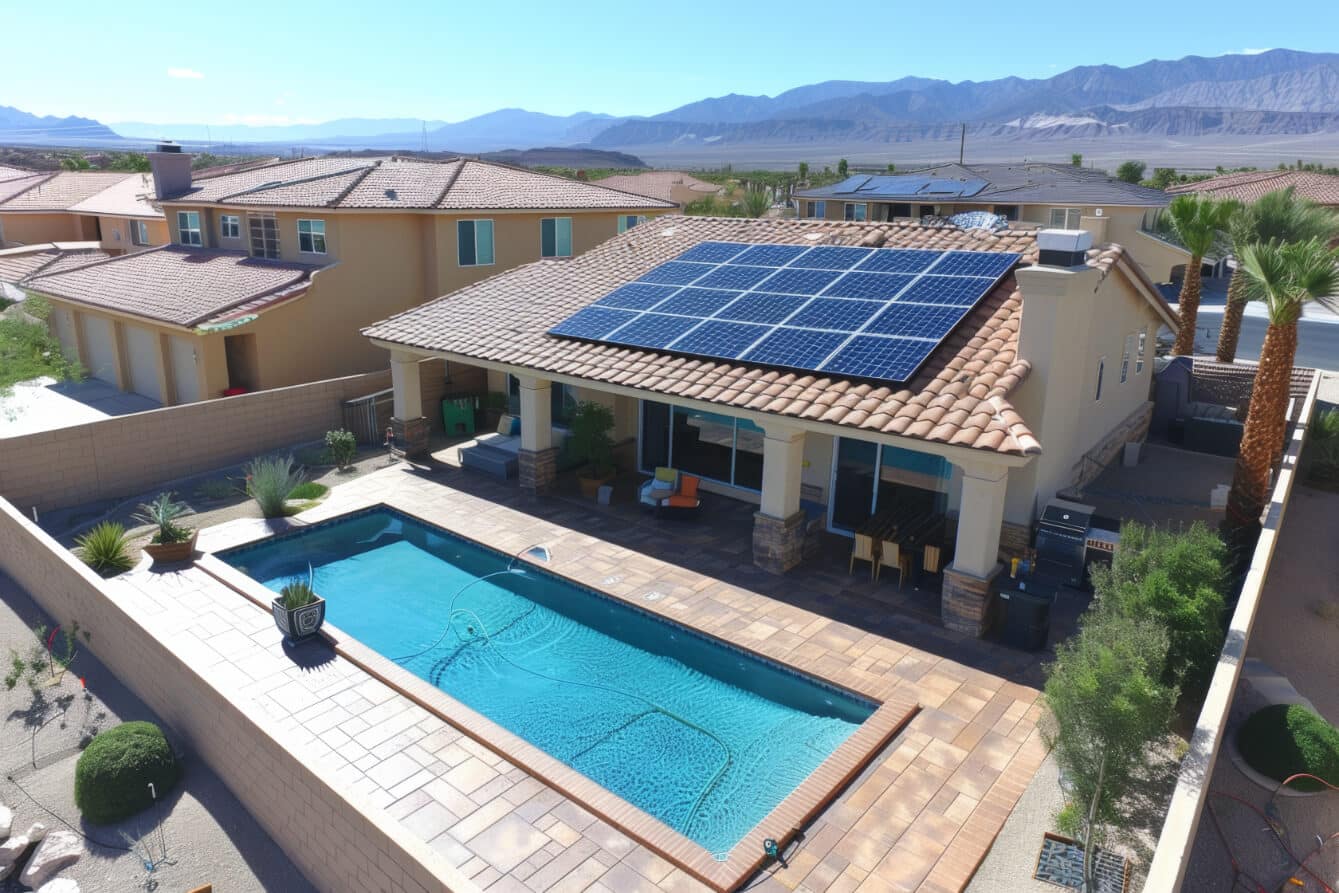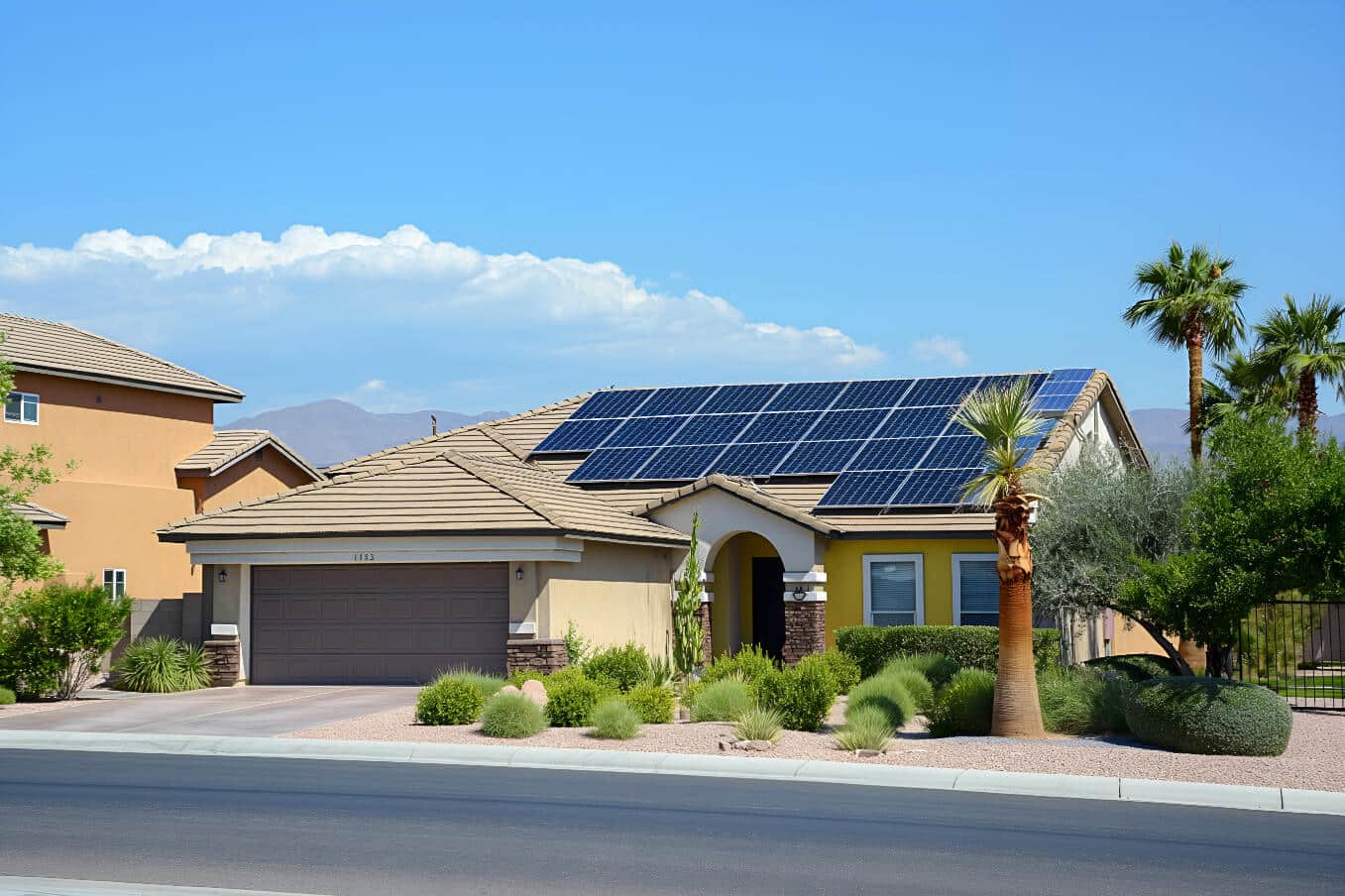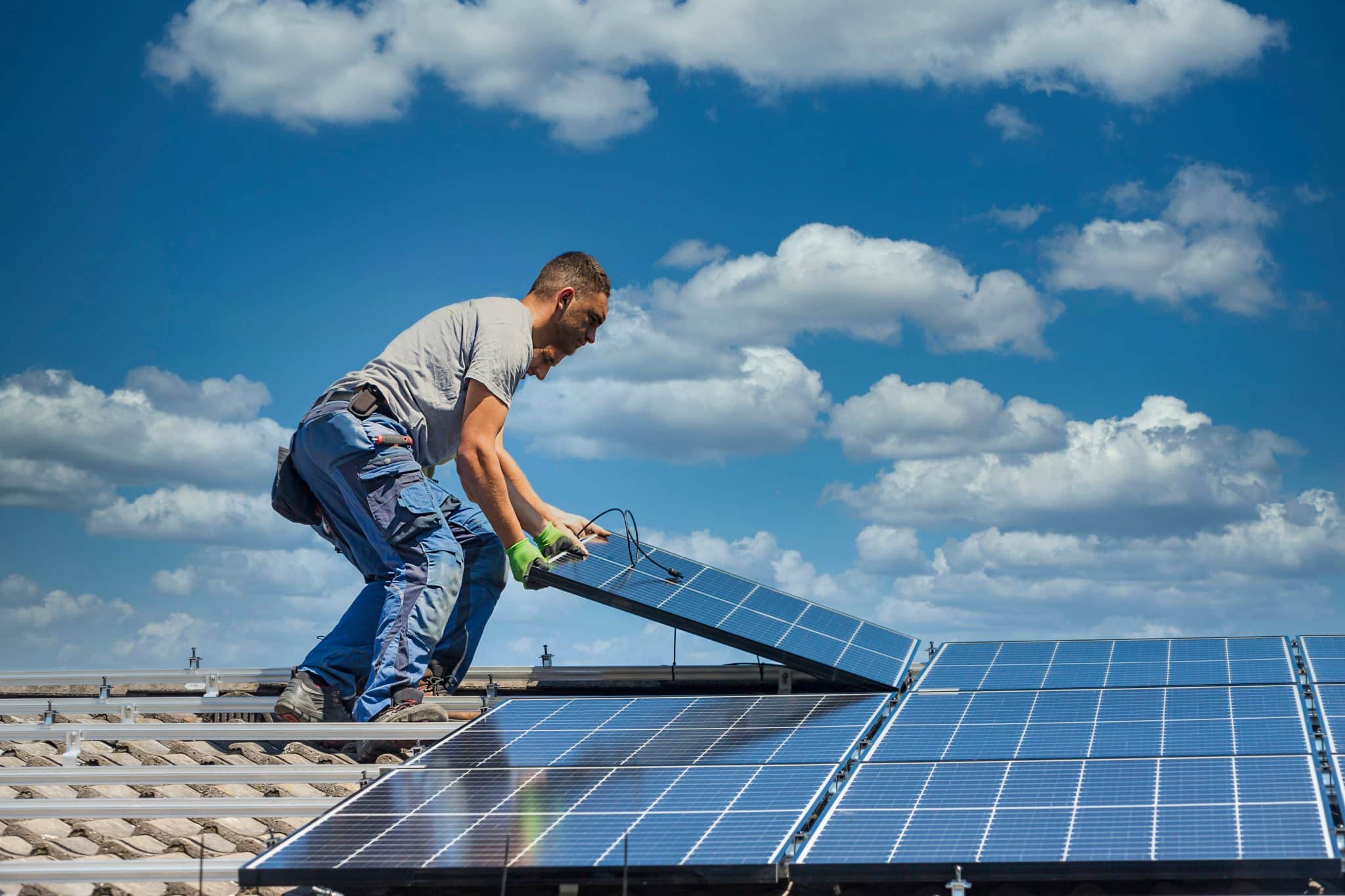Adding solar panels to your existing system can be a smart move if you’re looking to generate more renewable energy and reduce your electricity bills. But before you get started, you might be wondering, can I add solar panels to my existing system? The good news is that it’s possible, but there are important factors to consider, like your system’s capacity, the number of panels you need, and the energy consumption of your home.
Assessing Your Current Solar System

Before you start thinking about how to add solar panels to existing system, it’s important to assess your current solar setup. Here are the key factors you should consider:
- Energy Production: How much renewable energy is your system currently generating? If it’s not covering your energy needs, it may be time to think about expansion.
- Energy Consumption: Has your home’s energy use increased? Higher energy consumption means your current setup may no longer be enough.
- Available Roof Space: Do you have space for additional panels? The size of your roof and how much room is left will determine how many more panels you can add.
- System Compatibility: Is your existing system designed to handle an expansion? Some systems are built with future growth in mind, while others may need upgrades before adding more panels.
Checking these factors will give you a clearer understanding of your current setup and whether it can support additional solar panels. If you’re unsure about any of these aspects, it’s a good idea to consult with solar installers who can guide you through the process and help you determine the solar panels cost for expanding your system.
Considerations Before Adding Solar Panels to an Existing System

If you’re wondering how to add solar panels to an existing system, there are several important factors to consider. Expanding your solar system can be a great way to generate more renewable energy, but you need to ensure everything works together smoothly. Take a close look at your current system’s capacity, your roof’s space, and the age of your existing setup. Each of these can impact whether you need additional panels and how much it will cost.
System Capacity and Energy Needs
Your system’s capacity and your home’s energy needs play a big role in whether you can expand. Here’s what to consider:
- Energy Consumption: Has your energy use increased? This may mean you need more panels to meet your demands.
- System Capacity: Is your current system designed to support additional solar panels, or will upgrades be needed?
- Number of Panels: How many more panels will your home need to balance your energy consumption effectively?
Evaluating your energy consumption and system capacity will give you a clearer idea of the number of panels you need.
Checking Your Inverter’s Capacity
Before adding more panels, it’s essential to ensure your inverter can handle the additional power:
- Inverter Size: Check if your inverter has enough capacity for the additional panels.
- Upgrading the Inverter: If your inverter is too small, you may need to upgrade it before adding more panels.
- Solar Installers’ Input: Consulting with professional solar installers can help assess whether your current inverter is compatible or needs an upgrade.
Roof Space and Layout
Your roof’s space and layout are critical when thinking about how to add solar panels to an existing system. Consider these points:
- Available Space: Do you have enough roof space for additional panels?
- Panel Layout: The layout must ensure optimal sunlight exposure for the new panels.
- Shading: Avoid areas of the roof that may be affected by shading throughout the day.
Age of the Existing Solar System
The age of your existing solar system can impact whether adding new panels is worth it:
- System Age: Older systems may not be compatible with newer technology.
- Performance: Consider the current performance and whether it’s time for an upgrade rather than an addition.
- Warranty: Check if your system is still under warranty and whether adding panels might affect it.
Future Electricity Bills
Expanding your system can lead to future savings, but it’s essential to calculate potential impacts on your energy bills:
- Reduced Bills: Adding additional solar panels can lower your electricity bills by covering more of your home’s energy needs.
- Cost of Expansion: Weigh the cost of adding panels against long-term savings on your energy bills.
- Savings over Time: The bigger your system, the more potential savings, but you’ll need to account for initial costs.
By thoroughly considering these factors, you’ll be better prepared to decide whether adding panels is the right move for you. Don’t forget to maintain your system regularly with solar panel cleaning to keep it working efficiently.
Steps to Add Solar Panels
If you are considering how to add solar panels to existing system, follow these key steps to make the process smooth and efficient. Expanding your solar setup can increase energy production and savings, but careful planning is required.
Evaluate Your Energy Consumption
Before you add more solar panels, it’s essential to evaluate your home’s current and future energy needs.
- Review your energy usage: Take a look at your recent electricity bills. Are you consuming more energy than your current solar panels are generating? If so, it’s a sign that you may need to expand your system to meet your growing energy demands.
- Consider future changes: Think about any upcoming lifestyle changes. For example, adding new appliances, charging an electric vehicle, or expanding your home could increase your energy consumption.
- Determine how many panels you need: Based on your energy usage, calculate how many additional solar panels you would need to cover the gap. This will help you get a clearer idea of the number of panels
By accurately assessing your energy needs, you can ensure that the expansion will deliver the power you need and provide maximum benefits.
Consult a Solar Installer

Once you’ve evaluated your energy consumption, it’s time to consult a professional. A solar installer can guide you through the process of expanding your system and make sure everything is compatible.
- System evaluation: The installer will inspect your existing system to check its capacity and compatibility. They can address questions like “can I add solar panels to my existing system?” by reviewing the inverter, wiring, and other components to ensure they can handle the extra load.
- Review potential upgrades: During the consultation, the installer may suggest upgrades or changes, such as increasing your inverter’s capacity, adding a new mounting system, or adjusting wiring to support the additional panels.
- Cost estimation: The installer can also provide an estimate of the total solar panels cost for adding new panels, any necessary upgrades, and installation fees.
Working with an experienced solar installer ensures that your system will be expanded safely and efficiently, with all aspects carefully considered.
System Design and Configuration
After consulting the expert, the next step is the design and configuration of your expanded system. This is a critical stage to ensure your system works optimally.
- Roof space and layout: The installer will evaluate your roof to determine the best positioning for the additional solar panels. They will design the system to make the most of the available space while avoiding shaded areas that might reduce the efficiency of the new panels.
- Panel compatibility: The new panels need to work seamlessly with your existing system. The design phase ensures that the new and old panels are compatible in terms of output, efficiency, and layout.
- Inverter capacity: If your current inverter is not capable of handling the power generated by the extra panels, you may need to upgrade it. The installer will check this and make recommendations based on the total energy your expanded system will generate.
The system design and configuration stage is where all the technical aspects are addressed to ensure your system operates at peak efficiency.
Installation and Inspection
Once the design is finalized, the next step is installation. This is where the new panels are physically added to your system, and everything is thoroughly inspected.
- Professional installation: Skilled solar installers will handle the installation of the new panels, ensuring that everything is securely mounted and correctly connected to your existing system. They will take care of wiring and integration, making sure the new setup works efficiently.
- Inspection and testing: After the installation, the system goes through a detailed inspection. Inspectors will check that the system meets local building codes and regulations, and they will also test the system to ensure that the new panels are generating energy as expected.
- Safety and compliance: This step ensures that your system is not only functional but also safe and compliant with local laws.
The installation and inspection phase is crucial for making sure that your expanded system operates correctly and meets all regulatory requirements.
Testing and Monitoring
After the system is installed and inspected, it’s important to regularly test and monitor its performance to ensure everything is running smoothly.
- System testing: The system will undergo a series of tests to make sure the additional solar panels are producing energy at their full capacity. Any issues detected during testing will be addressed immediately.
- Ongoing monitoring: Once the system is up and running, it’s essential to monitor its performance regularly. This can help you spot any issues early and ensure the system is meeting your energy needs. Monitoring tools can give you insights into how much energy each panel is producing.
- Regular maintenance: To keep your system working efficiently, it’s important to schedule routine maintenance. Services like solar panel cleaning ensure that dust and debris don’t reduce the panels’ performance, helping you get the most out of your investment.
Regular testing and monitoring will help you maintain the health of your system and ensure it continues to meet your energy needs for years to come.
Permits and Regulations

When considering how to add solar panels to an existing system, it’s essential to understand the permits and regulations involved. Expanding your system requires more than just adding panels, it also means ensuring your project meets local laws and utility requirements.
Check Local Building Codes
Before you add more panels, check your local building codes to ensure your project is safe and compliant.
- Permits may be required: Depending on your location, you may need a permit to add solar panels. Local authorities will review your plan to ensure it follows safety rules.
- Building code compliance: Your system must meet specific regulations regarding roof structure, spacing, and weight.
- Consult an expert: A solar installer can guide you through the process, ensuring all permits and codes are met.
Checking codes early will help you avoid delays and ensure smooth approval.
Utility Company Requirements
Your utility company may have requirements for expanding your solar system.
- Grid connection: Utility companies need to know if you’re expanding your system, especially if it impacts how much energy is sent back to the grid.
- Approval for expansion: Some utilities require approval before adding panels.
- Net metering adjustments: Adding more panels might change your rates if you’re part of a net metering program.
Contact your utility early to avoid surprises and ensure a smooth expansion.
Impact on Solar Incentives and Rebates
Expanding your system can affect your eligibility for incentives or rebates.
- Incentive eligibility: Adding additional solar panels could impact your existing incentives or qualify you for new ones.
- Rebate adjustments: Rebates based on system size may change if you expand.
- Consult a professional: A solar installer can help you navigate changes to incentives and rebates, maximizing your savings.
Understanding these impacts helps you avoid unexpected costs and get the most from your investment. Regular solar panel maintenance can also help you ensure your system remains efficient and compliant with local standards.
How Much Does It Cost To Add Solar Panels To An Existing System?

If you’re considering how to add solar panels to existing system, understanding the costs involved is crucial. Expanding your solar setup can bring long-term savings, but it’s important to know what to expect upfront. Below, we’ll break down the main cost factors, potential savings, and financing options.
Cost Considerations
Several factors can affect the total cost of adding solar panels. It depends on the number of panels you’re adding, the current setup, and whether you need to upgrade components like your inverter. Installation fees and permits can also impact the final cost.
Cost of New Panels and Installation
The price of new panels varies depending on their efficiency and size. You’ll also need to factor in the cost of labor for installing the additional panels. If your current system wasn’t built with expansion in mind, you might need to make adjustments or upgrades, which could increase the total cost.
- New panels: The more panels you add, the higher the overall cost.
- Installation: Labor fees for professional installation are an important part of the budget.
- Upgrades: If your inverter or wiring needs updating, this will add to the costs.
To get an accurate estimate for your specific project, feel free to contact us.
Potential Savings and ROI
While there are upfront costs, adding solar panels can lead to significant savings over time. By increasing your system’s capacity, you can generate more electricity, reducing your reliance on the grid and lowering your energy bills.
- Energy savings: More solar power means less dependence on electricity from the grid, which can greatly reduce your bills.
- Long-term ROI: Over time, the savings from lower energy bills will help offset the cost of adding the panels, providing a solid return on investment.
Financing Options
There are several ways to finance the cost of expanding your solar system. Whether through loans, solar financing programs, or leasing, these options can help make the upfront costs more manageable.
- Loans: Some banks and lenders offer loans specifically for solar projects.
- Leasing: Solar leasing allows you to pay for the panels over time without the need for an upfront investment.
- Incentives: Check if you qualify for state or federal incentives, which could lower the overall cost.
Exploring financing options can make it easier to expand your system without a large initial payment.
Conclusion
Adding solar panels to your existing system is a great way to increase energy efficiency and reduce electricity bills. While the initial costs for panels, installation, and potential upgrades can vary, the long-term savings and return on investment make it a smart decision for many homeowners. With various financing options available and the potential to benefit from incentives, expanding your solar system can be a practical step toward greater energy independence. Be sure to consider your energy needs, budget, and the potential savings when deciding how to add solar panels to existing system.

